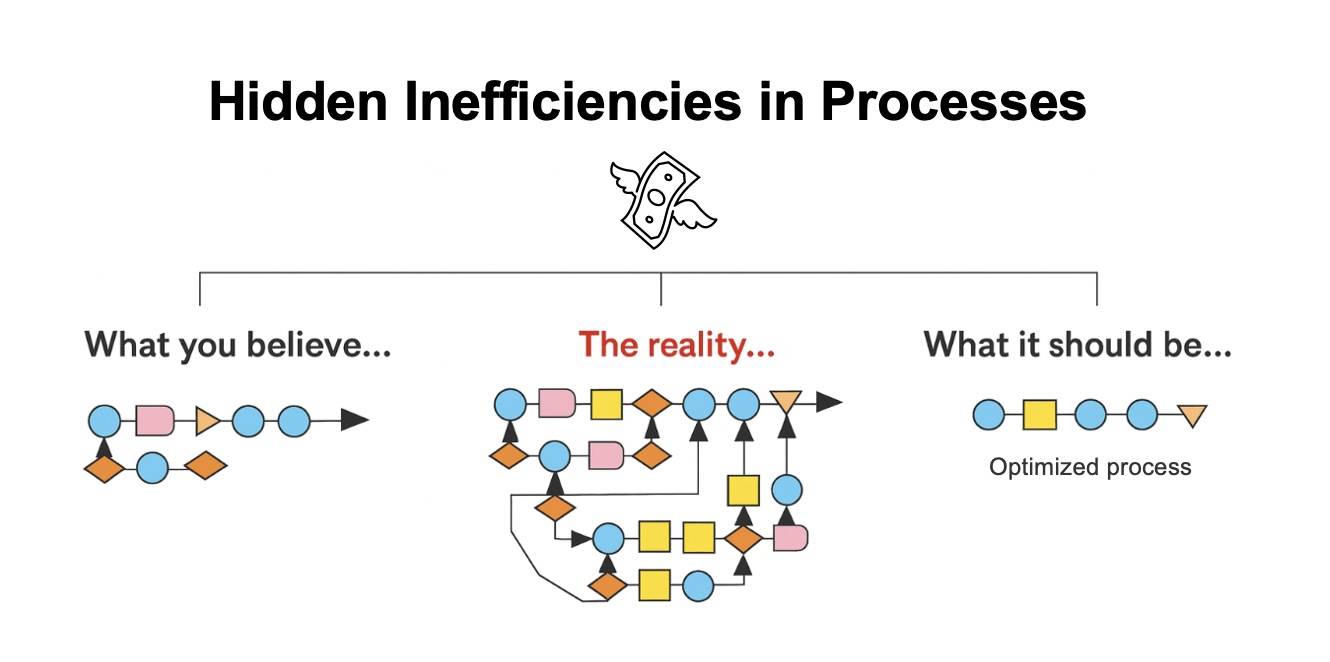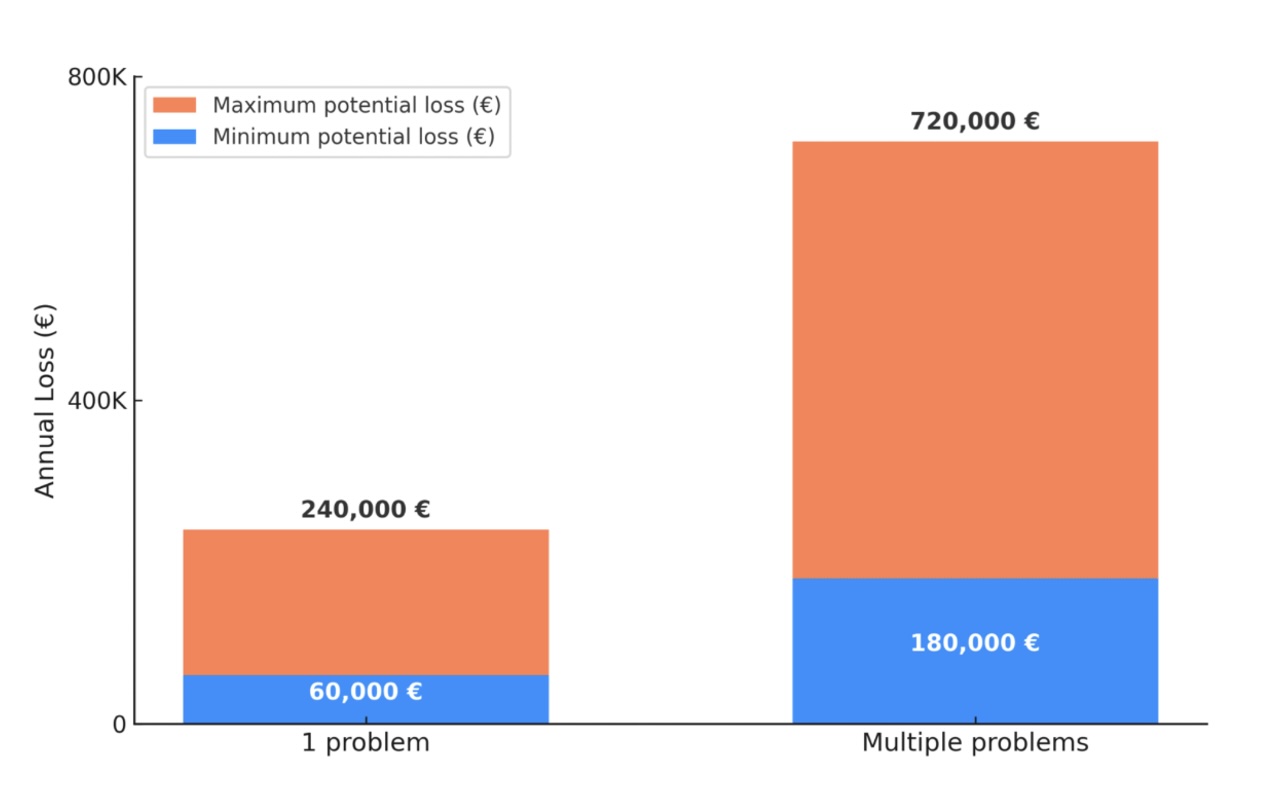Introduction: The Invisible Anchor Dragging Your Business Down
Does this sound familiar? You and your team are working harder than ever, yet growth feels sluggish. The same frustrating problems keep reappearing, quarter after quarter. There’s a persistent feeling that despite all the effort, your company is being held back by some unseen force, an invisible inefficiency that drains resources and stifles potential.
This isn’t a symptom of a lack of effort or talent. It’s the sign of an invisible anchor: broken, chaotic, and misunderstood business processes. These are the day-to-day workflows that dictate how work gets done, and when they are flawed, they silently sabotage your bottom line — making process optimization essential for sustainable growth.
The good news is that this anchor can be lifted. The first step is to see it clearly.
This article reveals five surprising truths about your business processes—and the enormous financial cost of ignoring them. Understanding these truths is the key to unlocking the growth and profitability you’ve been working so hard to achieve.
1. Your Company Has a ‘Hidden Factory‘—And It’s a 20-40% Profit Black Hole
Within every organization there exists a “Hidden Factory.” This isn’t a physical place; it’s the sum of all the unproductive work your team is forced to do that isn’t part of their official jobs. It’s a daily scramble to manually build reports because systems don’t talk to each other. It’s the endless meetings to align on data that should be clear. It’s the time spent fixing errors, re-entering data, chasing down missing information, and managing the fallout from delays. It is the work we do because the process is broken.

What you see vs. what really happens vs. what’s possible
This Hidden Factory is not a minor inefficiency. It is a profit black hole that consumes an estimated 20–40% of a company’s profits.
The power of this concept is that it gives a name—and a staggering financial cost—to the vague sense of waste that many leaders feel but can’t quite quantify. This isn’t just the “cost of doing business”; it’s a measurable drain on your resources that can be systematically eliminated.
2. The Process You Think You Have Isn’t Real
One of the most dangerous assumptions in business is that the official, documented process is the one people actually follow. In reality, every process exists in three different states:
- What management thinks it is: The clean, logical, and efficient workflow documented in official charts and manuals.
- What it should be: The optimized, ideal state that would exist in a perfect world.
- What it really is: The chaotic, workaround-filled reality of how work gets done day-to-day to overcome system limitations and process gaps.
This gap between perception and reality is the primary cause of the Hidden Factory and one of the biggest barriers to achieving operational excellence. When leaders make strategic decisions—about staffing, technology, or deadlines—based on the “imagined” process instead of the real one, they are planning for a reality that doesn’t exist. This leads to missed targets, recurring errors, and a perpetually stressed workforce.
3. There Are Two Ways to Fix Things: ‘Heal a Wound’ or ‘Transform Your DNA’
Recognizing that your actual process is a chaotic workaround is the diagnosis. The next step is choosing the right prescription. Crucially, there isn’t just one. Applying a one-size-fits-all approach is ineffective; you must match the solution to the strategic goal.

First is the tactical “Project” approach. This is a short-term, focused intervention (typically 1-3 months) for acute pain points. It’s the right choice when you need to solve an urgent problem, deliver quick wins, or “test first” because you’re working with a limited budget or have limited internal resources.
Project= heal a wound
Second is the strategic “Program” approach. This is a long-term journey (around 18 months) for companies with serious growth ambitions of 30-50% in the next 2-3 years. It’s designed for leaders who understand that “change is a marathon, not a sprint” and are frustrated because their problems seem to return right after they “solve” them. This approach builds a lasting, autonomous culture of performance — where process automation and continuous improvement become part of the company’s DNA.
Program = transform your company DNA
Understanding this distinction is critical. It allows leaders to choose the right tool for the job—whether they need immediate relief for a painful symptom or a comprehensive transformation to build a foundation for future growth.
4. Doing Nothing About One Problem Could Cost You Over €240,000 Per Year
What is the real cost of inaction? It’s easy to postpone process improvements by viewing them as an expense. The reality, however, is that not fixing them is far more expensive.
The estimated cost of a single, persistent, unsolved business problem is between €5,000 and €20,000 per month. When you annualize that figure, the true scale of the loss becomes clear. Doing nothing about just one recurring issue costs your business between €60,000 and €240,000 every single year — money that could otherwise be used to reduce operational costs and accelerate growth.

And that’s just for one problem. For companies facing multiple systemic issues, the cost of inaction escalates dramatically, reaching an estimated €180,000 to €720,000 per year. Compared to these massive, recurring annual losses, the one-time investment required to implement a permanent solution is not a “cost” but a high-return investment in your company’s future.
5. The Gains Aren’t Incremental—They’re Transformational
True process optimization isn’t about making small, incremental tweaks. It’s about fundamentally redesigning how work gets done to deliver massive, game-changing results. When you eliminate the Hidden Factory and align your processes with your business goals, the impact is felt across the entire organization.
These aren’t theoretical gains. Consider these real-world results achieved by tackling specific business problems head-on:
- Problem: Weak sales forecasts and system errors were causing stock shortages, missed delivery deadlines, and customer complaints.
- Result: $7.6M in reducing operational cost was realized in just 6 months through an end-to-end value stream analysis and rapid problem solving.
- Problem: Fragmented processes between Finance and Procurement, with manual data handoffs between isolated software platforms, were causing massive delays and errors.
- Result: A 65% reduction in processing time and a 90% elimination of manual data transfers were achieved by automating workflows.
- Problem: Inconsistent operational standards and efficiency gaps were driving up costs and creating waste.
- Result: Workload balancing and waste elimination led to 37% fewer operators required per shift and a 25% reduction in work-in-process inventory.
- Problem: Long product change-over times on the production line were creating bottlenecks and delaying customer orders.
- Result: A focused analysis led to a 38% faster change-over time, enabling smaller batch sizes and 10% faster deliveries.
These are not minor improvements. They are transformational outcomes that create significant competitive advantage, boost profitability, and free up resources to fuel future growth.
Conclusion: What’s Hiding in Your Factory?
That invisible anchor dragging down your business has a clear financial weight. It’s the 20-40% of your profit consumed by the Hidden Factory. It’s the €720,000 or more that drains away annually as multiple process flaws go unresolved. Immense, untapped potential for growth and profitability lies dormant within the very way your company operates today.
Fixing these broken processes isn’t just another item on a to-do list; it is one of the highest-leverage activities a leader can undertake to unlock that trapped value and build a foundation for operational excellence.
By shining a light on these hidden factory inefficiencies, you can finally cut the anchor loose.
What profit-draining activities are hiding in your company’s ‘hidden factory?’



